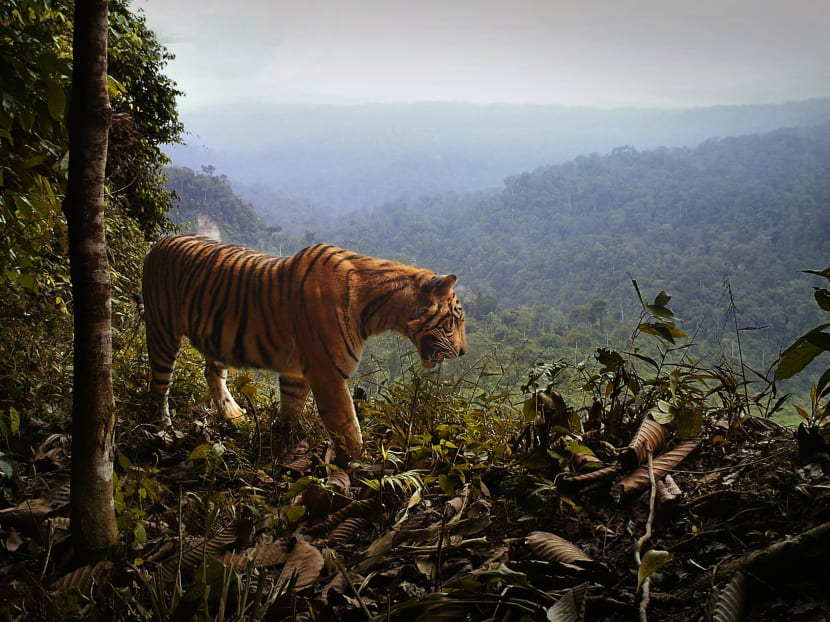New study estimates 618 tigers in Sumatra, calls for deforestation to be curbed
SINGAPORE — Despite higher densities of Sumatran tigers in the Indonesian island’s well-protected forests, the critically endangered big cat still faces a high risk of extinction unless deforestation can be controlled, said researchers of a new study.

A young male Sumatran tiger caught by one of the field cameras planted by NTU's Dr Matthew Luskin and his team. Photo courtesy Dr Matthew Luskin, NTU Singapore
SINGAPORE — Despite higher densities of Sumatran tigers in the Indonesian island’s well-protected forests, the critically endangered big cat still faces a high risk of extinction unless deforestation can be controlled, said researchers of a new study.
Published in the Nature Communications journal on Wednesday (Dec 6), the study estimated Sumatra to be home to about 618 tigers, slightly higher than the 565 previously estimated by the International Union for Conservation of Nature.
Tiger densities had increased nearly 5 per cent a year from 1996 to 2014, likely indicating a recovery from earlier poaching. Tiger densities in primary forests were 47 per cent higher than in degraded forests.
But due to forest loss and degradation, as well as greater fragmentation of sub-populations, the total potential population on the island declined by 16.6 per cent from 2000 to 2012.
“Our results are a mixed bag for tigers. The loss of key tiger habitats is causing significant conservation challenges for Sumatra – and in particular for this critically endangered species,” said Dr Matthew Luskin, a research fellow at the Nanyang Technological University’s Asian School of the Environment. He led the study, titled Sumatran Tiger Survival Threatened By Deforestation Despite Increasing Densities In Parks, in partnership with researchers from the Smithsonian Institute and the San Diego Zoo Global in the United States.
The “disproportionate loss” of higher quality lowland and hill forest and primary forest habitat, as well as fragmentation, has offset the higher tiger densities and led to a potentially higher threat of extinction. Sustained expansion of oil palm plantations, forest degradation and poaching continue to threaten the few remaining tiger populations on the island, the researchers wrote.
Only Gunung Leuser and Kerinci Seblat national parks were found to have robust populations with more than 30 breeding females. These two populations are crucial, but the researchers noted that Kerinci Seblat lost nearly 13 per cent of its forested area from 2000 to 2012 and remains a “poaching battleground”.
“Safeguarding the remaining expanses of primary forests, such as Gunung Leuser National Park, is now absolutely critical to ensuring tigers can persist indefinitely on Sumatra. Largescale reforestation is unlikely,” said Dr Mathias Tobler of the San Diego Zoo Global, the study’s senior author.
The team obtained data from other researchers but also spent a year conducting expeditions through Sumatra’s national parks and adjacent non-protected areas, mounting hundreds of motion-activated cameras. Using the footage, tigers were identified by the unique pattern of stripes and this allowed researchers to track their movement.
The findings suggested that while tigers regularly used human-dominated landscapes immediately outside national parks, this was relatively poor habitat.
The team also developed new methods to estimate the number of tigers in each remaining forest patch of Sumatra.






